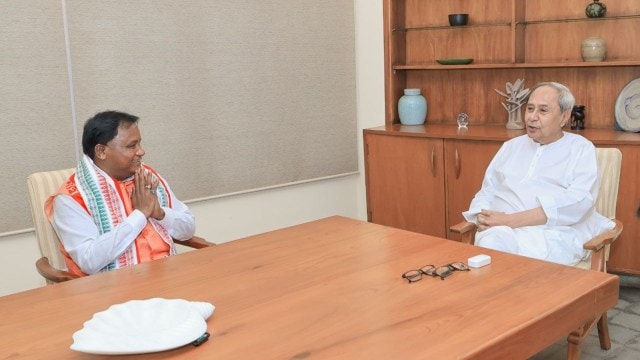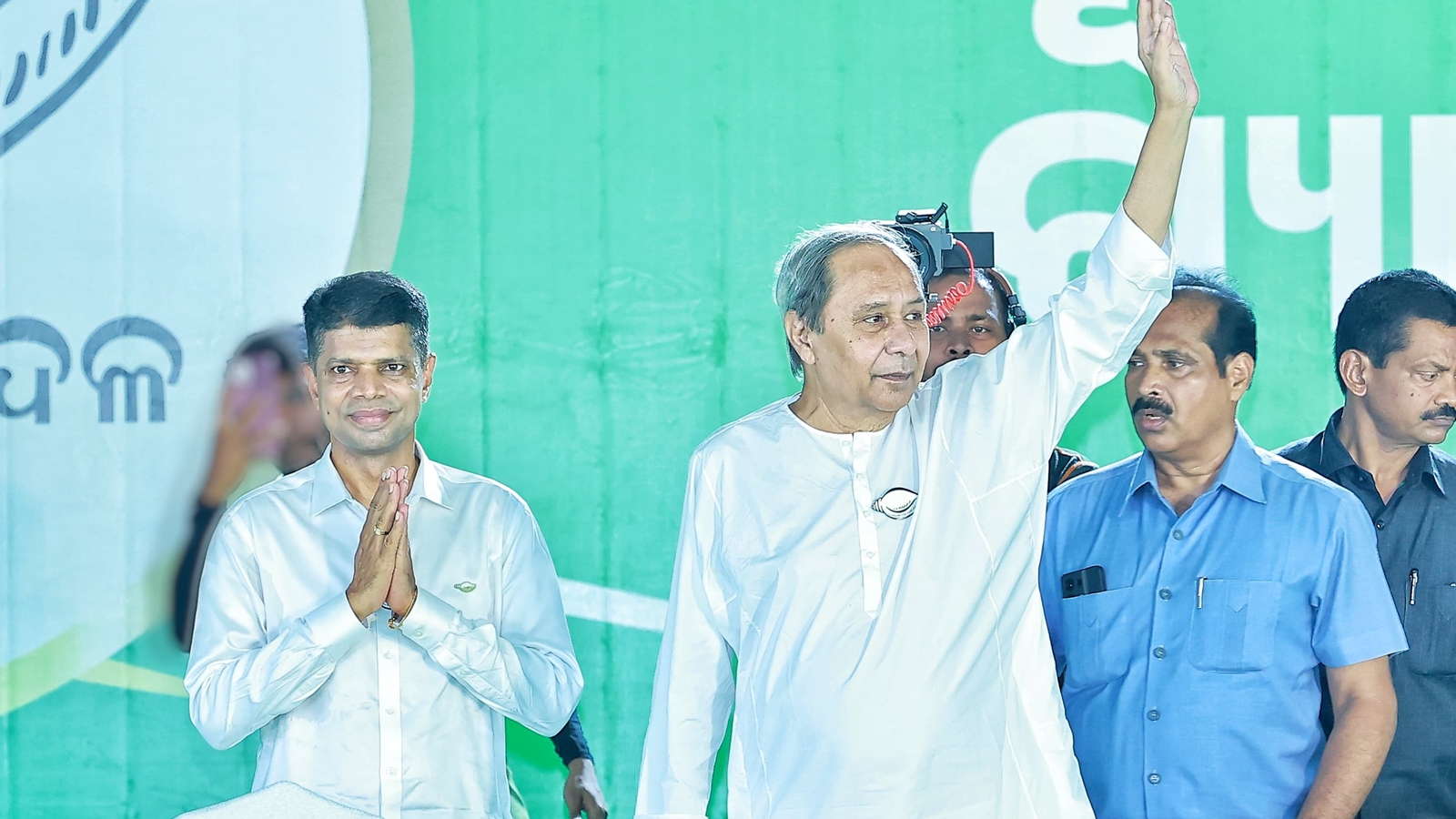
Written by Ganesh Gaigouria
After a reign of 24 years, Chief Minister Naveen Patnaik’s party, Biju Janata Dal (BJD), lost its majority in Odisha’s 2024 assembly election. The BJD secured 40.22 per cent of the votes and won 51 seats (against 112 seats in 2019), while the BJP got 40.07 per cent of the vote share and won 78 seats. The BJD also failed to win a single seat in the Lok Sabha. This result was surprising, because the BJD is known for its welfare and social security schemes, and the popular leadership of Patnaik led the BJD to large majorities in previous elections. The welfare schemes include the Biju Swasthya Kalyan Yojana (universal health coverage), Khushi Scheme (free sanitary napkins for girls from class six to 12), Aahaar Yojana (providing hot, cooked meals to the poor at low cost), Madhu Babu Pension Yojana (pension for elderly, widows, and persons with disabilities), Jaga Mission (world’s largest slum titling and improvement programme), LAccMI Scheme (bus service to connect gram panchayats with their respective district headquarters) and so on. Yet, this time, the BJD’s welfare-centric electoral strategy seems to have failed — making way for the BJP to rule in Odisha for the first time. How can this electoral upset be explained? I will discuss broadly three reasons for this electoral defeat of a welfare-centric BJD and the rise of the BJP in Odisha.
Fear of bureaucratisation
With bureaucrats controlling service provisions, politicians were largely unable to solve local issues like sanitation, street light problems, pensions, and scholarships. As a result, the relationship between voters and politicians changed, with voters reposing much less faith in politicians. One example of this is the functioning of the Block Development Officers (BDOs). They are now directly allocating grants and deciding on development spending, while previously, such decisions would require discussion with, and approval from, elected representatives and bodies like the sarpanch and zilla parishads.
On September 15, 2023, hundreds of sarpanches demonstrated on the streets in Bhubaneswar, alleging the excessive interference of government officials such as the BDOs in panchayat development matters. The president of the State Sarpanch Federation, Romancha Sahu, said, “the powers of Sarpanches have been heavily curtailed. Our rights have been dented. Countersignature by the BDO has been made mandatory for every developmental work in Panchayat.”
The BJP strategically used this perception of baburaj (officer rule) during its campaign by regularly invoking terms like gumasta (agent) and bhadatia (rented politician). These three terms formed a new political vocabulary in Odisha. The BJP used gumasta to refer to V K Pandian as a bureaucrat-politician who was supposed to be an “agent”. Bhadatia means someone who is not a political leader but controls the ruling party and government. Baburaj alludes to officer control, from panchayat politics to ticket distribution of BJD.

This narrative resonated with voters, creating concerns about the bureaucratic control over politics. This fear led to the invisibilisation of BJD’s welfare and social security scheme, and the BJP was able to take over.
Religious polarisation, invisibilisation of development
The second explanation for the BJD’s defeat is the religious polarisation and use of Lord Jagannath for political ends.
Both the BJD and BJP made competitive appeals on religious grounds. Before the elections on January 17, the BJD/state government began a massive outreach programme (parikrama) where arpan raths (chariots) were taken out to every village to promote, preserve and protect Jagannath culture through people’s participation. Big screens were instituted at gram panchayats and block headquarters to view the unveiling of the Jagannath temple corridor project and people were also invited to participate in the event. This parikrama was an attempt to counter the BJP’s Ram temple unveiled in Ayodhya. While the BJD focussed its campaign on the Rs 800-crore corridor around the temple of Lord Jagganath in Puri, the BJP countered this by raising the case of the missing ratna bhandar (treasure store) key of the same temple. It so happened that on the morning that Prime Minister Narendra Modi did a roadshow around the temple premises in Puri on May 20, VK Pandian of the BJD led a roadshow on the same route in the evening. Given the domain expertise that the BJP enjoys in driving narratives around religious appeals in elections, the party was able push ratna bhandar’s mismanagement by the BJD much more successfully and forcefully as compared to BJD’s attempts.
Odisha is known for its spiritual ethos. Ninety-three per cent of the population is Hindu, and more than 50 per cent are devotees of Lord Jagannath. Earlier, the BJD had presented itself as a secular party. It also broke its alliance with the BJP in 2009 by alleging that it was a communal party after the Kandhamal riots. But in this election, the BJD paradoxically played the religion card, which led to its downfall. This shift in course from an emphasis on welfare distribution cost the BJD dearly.
Identity Politics and Odia Asmita
Odisha is not know for identity politics, especially caste-based identity politics. However, the 2024 election witnessed a distinct linguistic identity politics in Odisha, and of sub-nationalism and pride in history and culture. Odisha was the first linguistically-carved state. In this election, there was a resurgence of Odia identity politics with the slogan of “Odia Asmita”. In national politics, the BJP is talking about one nation, and unity of idenity. But in Odisha, the party attempted to rile up the people by alleging that V K Pandian, a star campaigner of the BJD and Odisha cadre IAS officer (from Tamil Nadu) is an “outsider”. Pandian was also accused of trying to control the politics and economy of Odisha before he joined politics officially.
BJP’s Dharmendra Pradhan claimed that the Odia identity is threatened by an “outsider” and began the “Odia Asmita” and “Swabhimana” (self-respect) narrative. In his speeches, he brought up the issue of Odia nationalism and pride by reciting the history of the Paika mutiny against the British. He invoked legendary figures like Bakshi Jagabandhu, Birsa Munda, and Baji Rout and the great Kalinga War.
The BJP even asserted that Pandian, as a Tamilian, is humiliating Naveen Patnaik by making him his puppet. The anti-Pandian/Tamil narrative was popularised by alluding to the control of Tamil Nadu contractors over the Odisha government. The fear of an “outsider” ruling the state by proxy was used very effectively by the BJP to espouse regional sentiments. This regional nationalism provided a new vocabulary of subnational identity politics in Odisha.
The writer is a Visiting Faculty at the National Law School of India University, Bengaluru, and a PhD Candidate at the Centre for Political Studies, School of Social Sciences, Jawaharlal Nehru University, New Delhi
Click here for real-time updates on the Lok Sabha Election Results 2024
© The Indian Express Pvt Ltd
First uploaded on: 14-06-2024 at 20:37 IST


